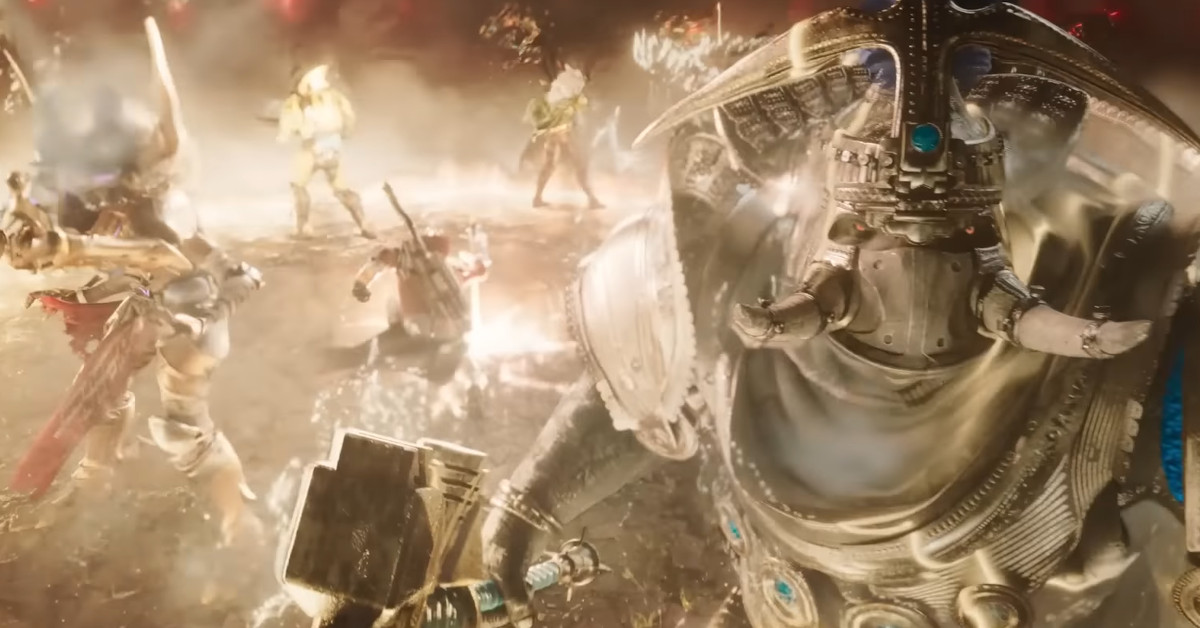Honkai: Star Rail has a refreshingly silly air to its world. In the game, players can go rummaging through the trash or flirt with characters while texting on their phone. Flavor text for achievements or items might reference anything from games like Pokémon to popular media like Breaking Bad. Its internet-savvy and self-aware voice brings a specific flavor of comedy that, as it turns out, was in part due to the freedom given to localizers in the development process, developers told Polygon.
Honkai: Star Rail is a free-to-play sci-fi roleplaying game from Hoyoverse, the developers of Genshin Impact; it’s already available on Windows PCs and mobile devices, and it was recently released on PlayStation 5. Polygon spoke to the game’s developers about how they brought a unique voice to its sci-fi world. They gave us a deep dive into the process of how the game was brought stateside, and specifically how they empower localizers to add memes and specific cultural references.
While Hoyoverse has offices across the world, the Honkai: Star Rail team writes the first script in Chinese. The team told Polygon that there’s a methodological approach to the localization process with “creative text,” a category of text that includes dialogue options, character lines, interactive dialogue, mission names, Eidolon names, and more. By giving localizers the freedom to add in entirely new references, those translators can craft a faithful adaptation of the source material written in Chinese for an English-speaking audience.
“Our goal is to empower our localization team with a higher degree of creative freedom that they need to not only preserve the original flavor of the authorial intent but also to craft a reading experience that feels authentic and natural to our audience as if all the texts were originally composed in their native language,” a member of the development team told Polygon in a written Q&A.
:no_upscale()/cdn.vox-cdn.com/uploads/chorus_asset/file/24998082/Honkai__Star_Rail_9_4_2023_11_33_54_AM.png)
A lot of times, this means the localizers will entirely replace pop culture references and memes based on the context of where they appear the game. That means the team can replace Chinese-specific references with ones that would be more familiar to English-speaking players. From there, writers are also free to add their own additional quips or references that they think will entertain players.
A member of the localization team shared an example with Polygon: “For example, there is an in-game achievement named ‘All the Way Northwest’ in Chinese. This Chinese name is a reference to the Mandopop song by a famous pop musician, which is well-known among Chinese speakers. Obviously, this reference would be lost on non-Chinese readers if translated literally. After some research and contemplation, I drew inspiration from Guns N’ Roses’ ‘Sweet Child O’Mine’ and created ‘Sweet Child O’Mine’ as a tribute to the classic rock song. This name not only mirrors the original authorial intent but also hints at this specific achievement’s connection to Pom-Pom.”
When members of the localization team approach their work, they need to think beyond the content and reference itself. They also needs to think about the rhythm of the original script and general feeling of the text. In this way, localizers find ways to imbue the English-language version with a sense of flair that would other be lost in a direct translation from the Chinese script.
“Another idiosyncratic feature of our game writing is the prevalent use of Classical Chinese, often found in a wide variety of forms, such as ancient Chinese classics, poems, lyric poetry, prose, and so on,” said the member of Honkai: Star Rail’s localization team. “Classical Chinese is known for being rhythmically harmonious, stylistically elegant, contextually laconic, and thematically evocative. As beautiful as they are to read, these qualities are almost impossible to be simultaneously translated into modern English. Thus, instead of translating word-for-word, we have to think outside the box and find new innovative ways to infuse our English writing with the same stylishness.”
:no_upscale()/cdn.vox-cdn.com/uploads/chorus_asset/file/24998379/StarRail_Image_1697142038.png)
The developers gave an example of flavor text used in the Eidolon descriptions of Jing Yuan. In the original version of the text, the developers wrote all six of his Eidolon descriptions with poetic lines using ancient Classical Chinese. This approach emphasized the grandeur of his feats in combat, lending a sense of gravitas to the descriptions of his prior accomplishments.
The localization team member who spoke to Polygon explained how they handled this: “To achieve the same level of stylistic elegance as the original Chinese, I employed the literary technique of alliteration in naming all six of Jing Yuan’s Eidolons. Each name consists of three words, resulting in a total of 24 words, all starting with the letter ‘S’ for the entire set of Eidolons. This was a time-consuming and creatively demanding process, but the end result is a well-arranged symphony that not only stands on its own but also remains true to the essence and flavor of the source material.”
If you want to get a taste of the writing and all its delightful quirks, Honkai: Star Rail is available to play on mobile devices, Windows PC, and now, PlayStation 5.



